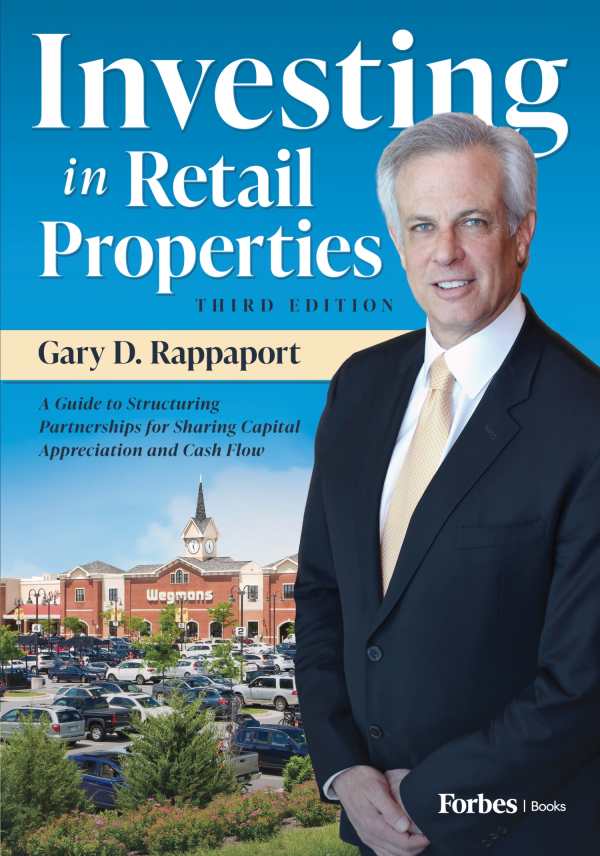Investing in Retail Properties
A Guide to Structuring Partnerships for Sharing Capital Appreciation and Cash Flow: Third Edition
Leading by example, Investing in Retail Properties shares thorough, tested advice for prospective investors.
Updated to reflect post-pandemic changes like the work-from-home economy, this third edition of Gary D. Rappaport’s Investing in Retail Properties names methods for developing a commercial investment business with an eye toward sustainable, long-term financial growth.
Rappaport, who has an investment background in buying and growing shopping plazas, uses his stories of personal success to show how commercial real estate developments can be quality investments. Those looking to achieve the same success, his book says, will benefit from expertise in five areas, including construction, leasing analysis, and property management. The book also discusses crucial techniques, like finding the right investors, and it makes an argument for prioritizing investments in shopping centers that are anchored by grocery stores, whose locales make them more resistant to general economic changes.
Organized to move prospective entrepreneurs through the stages of selecting, buying, and developing their first projects, this is a clear and useful guide. It mixes basic rules (such as to develop properties in close proximity to housing so people can access them easily) with detailed advice (as when it comes to negotiating stakes with investors). And its final chapters step beyond these theories with their five case studies, which detail the complexities of real estate projects in real time and in aspirational detail, sharing useful financial analyses, community profiles, and photographs of the completed projects.
The prose strikes an optimistic tone throughout. This extends to its general rosy sales pitch for considering commercial real estate as a useful tool to build personal wealth. It is convincing in suggesting that the risks involved in such developments are worth consideration but that the financial upsides still make them worthwhile.
However, while the book’s glimpses into Rappaport’s investment materials are fascinating (in part because of their inclusion of real numbers from the projects that his group has been a part of over the years), the book is also sometimes too heavy with personal stories. It risks overemphasizing Rappaport’s own investing strategies, as when it covers his first dream purchase, of the Milford Mill Shopping Center, in detail. Still, its extensive financial documents are compelling models, and its samples of materials that Rappaport’s group generated to market the properties are helpful.
Investing in Retail Properties is a sensible investment guide for those who are looking to leverage their preexisting skills toward exciting new profits.
Reviewed by
Jeremiah Rood
Disclosure: This article is not an endorsement, but a review. The publisher of this book provided free copies of the book and paid a small fee to have their book reviewed by a professional reviewer. Foreword Reviews and Clarion Reviews make no guarantee that the publisher will receive a positive review. Foreword Magazine, Inc. is disclosing this in accordance with the Federal Trade Commission’s 16 CFR, Part 255.

